The curative benefits of spiritual bathing have long been observed throughout many cultures. This post gives a few examples of those traditions including Japanese bathing, Public bath houses and sauna.

This article was initially published in 2020 but ties in perfectly with my latest post about Helsinki. With the rising popularity of saunas, including red light therapy and other wellness trends, I thought it would be helpful to share it again.
Last night in my Friends with Shakespeare class, I learned that the bard often likened women to water. Women are blood, water, amniotic fluids. Our moods come and go with the moon and the tides. And according to Shakespeare, this fluidity is what makes us unreliable and unstable. Not good for politics.
Shakespeare could learn a thing or two about feminine biology and why our emotions make women strong leaders, but he is dead and there is no point. So, instead, let's examine our spiritual attachment to water and the importance of ritual bathing in many cultures.
Ever since the first tetrapods climbed out of the water and evolved into humans, they have been desperate to get back in. Cleopatra, ruler of a nation and OG influencer of a thick eyeliner, bathed in the soured milk of 700 donkeys. The lactic acid in the milk worked as a natural peel, smoothing fine lines and wrinkles. Marie Antoinette, Queen of France and would-be host of an 18th century version of Bake-Off, filled her tub with an infusion of water, pine nuts and sweet almonds. The nuts acted as an exfoliant, sloughing off dry skin, leaving her soft and sweet smelling. For purposed of this post, let's not to look at the fatalities of bathing, such as Virginia Woolf or Ophelia herself.
Bathing calms the mind and reduces anxiety by introducing hormonal reactions in the body. Being in warm water stimulates oxytocin. Known as the 'cuddle hormone', oxytocin is secreted by the posterior lobe of the pituitary gland when people snuggle or bond socially. It's a feel-good hormone. For best results, heat the water as hot as you can tolerate. The hot water releases endorphins and makes you feel good.
Menopausal women should try hot baths before bed. After a hot bath, the body will regulate itself back to a normal temperature, thus providing a more restful sleep. And because the skin is the body's largest organ, adding magnesium and other minerals to bathe water is a good way to absorb supplements.
RITUAL BATHING AROUND THE WORLD
The Japanese take bathing seriously. There are two types of bath houses in Japan: ONSEN and SENTO. They are both communal hot water baths and have many similarities. But while the onsen is a place for relaxation and associated health benefits, the sento is more for practical hygiene.
Onsen water is geothermal-heated below ground and rises to the surface bubbling hot. Official onsen water must contain one of the 19 designated chemical elements that occur in natural hot spring water. It must be at 25C when it comes out of the ground.
A ROTENBURO is an outdoor onsen and a treat to Japanese. The joy of an outdoor onsen is a strong connection to nature. The ideal rotenburo has a pleasing view, natural surroundings and fresh air. Seeing the snow monkeys of Jigokudani in onsen should be on every travellers must-see list.
The sento are indoor public bathhouses supplied by ordinary heated water. They range from ancient ornate temple-like structures to basic store front, but, are declining in popularity, as home tubs have become more affordable.
Both styles of bath houses employee a serious code of etiquette, and as manners are a big part of Japanese culture, it is important to be aware of the rules.

When I'm not too keen on public nudity, or wearing a washcloth on my head, I am keen to try new things. When I someday get to Japan, I will find a snowy mountaintop, jump in the onsen and enjoy the warm internal hug of oxytocin entering my bloodstream. And there better be monkeys.

My first visit to a HAMMAM was with my friend Apu. She had a gift certificate to the Moroccan Spa in Harrod's to burn and I, tired of so many years of bathing myself, was keen to let someone else do it for me.
Our treatments included a warm room, followed by a scrub with black soap made from olives and olive oil. Next came exfoliation, massage, hair wash and then buckets of water dumped over-head to clean off. Then the best bit: the relaxation room with dates, figs and Moroccan tea. It was lush. Granted, a semi-private luxury hammam in a department store was more of a simulation. But for me, it was a good, un-intimidating start to this new experience.
The Romans built the Baths of Diocletian over 2000 years ago. The ruins, still found in Rome, show the largest bath house structure in the Empire. Communal-style bathing saw a revival during the Ottoman Empire. The Victorians adopted the practice, and it spread throughout the British Empire and Western Europe.

Roman baths featured rooms of varying temperatures, stimulating circulation and detoxifying the body. A bather began in a relaxation room, building up a good sweat with a steady flow of hot, dry air. Either a cold dip, cold splashing or another hot room followed. Then the scrub, followed by massage and a cooling room for relaxation.
Two of the most common types of baths today utilise these two practices. These are the Moroccan hammam and the Turkish bath. The Moroccan hammam is often favoured because of its use of steam over water. Steam softens the skin, relaxes the mind, and opens the pores for a deep cleansing experience. The Turkish bath uses dry heat and will typically have a plunge pool for cooling off.
The hammam continues to be an integral part of Middle Eastern and North African culture. Beautiful, old bath houses are as much a place to gather and talk, as it is a place to relax and clean yourself.
'Taking the waters' has long been part of everyday Hungarian life. Budapest was settled by the Romans, then rediscovered by the Ottomans; two cultures that revered thermal hot springs bathing. Budapest sits on a network of rich, thermal mineral water that bubbles up naturally from the ground. The layout of the baths are reminiscent of Roman baths; sauna, hot rooms, steam rooms, cold plunge pools and rooms for massage. Some have outdoor pools with lap lanes, waterfalls, and whirlpools.
'Sparties', or spa parties, are common occurrences on Saturday nights. Spas turn into bars where there are light shows and alcohol. The spas are open year-round.
Iceland's near constant volcanic activity creates a constant flow of geothermal water. The country has many spa facilities, most notably the Blue Lagoon. It was here that silica from geothermal water helped to cure psoriasis.
A BANYA is one of the oldest traditions in Russia, and is still popular today. You can find them in the big cities and the small towns all over Russian. Fortunate Russians with country homes or cottages often build their own banyas there.

A traditional Russian banya will be a wooden structure lined with wooden benches. A log fire will heat water for steam and hot air. While a typical steam room temperature is up to 120 degrees Fahrenheit, Russian banyas are 160 to 170 degrees Fahrenheit.
The other big difference between a sauna/steam room and a banya is the VENICK. A venick is a broom or bundle of twigs collected from birch or oak trees. While in the banya, an attendant, or BANSCHIK, will use this broom to smack the toxins right out of you.
The Russian banya is a communal bath and a popular thing to do with groups of friends. They know how to party in Russia. And if you are at the banya with friends, you can dismiss the banschik and smack each other with the venick. Better yet, if your banya party is in Siberia, you can whack each other with twigs while dressed in a small towel, then go outside and roll around in the snow.
There are an estimated two million LöYLA, or saunas, in Finland for a population of 5.3 million. Big companies and state institutions have company saunas. The president has an official sauna, as does the prime minister. They are found in city apartments and in country cottages.
As in Russia, traditional saunas in Finland are wood-heated. A smoke-sauna is the original sauna and believed by most Finns to be the best. The sauna door closes after the wood has burned down, leaving the embers to heat the sauna to the proper temperature, creating a woodsmoke aroma.
Basic etiquette in the Finnish sauna is elementary. You first take all your clothes off, then shower before going in.
When you come out of the sauna, jump into a lake, or roll in the snow. If you do roll in the snow, make sure it is fresh and powdery. If you snow-roll disrobed in rough ice, freezer burn on delicate bits will mostly likely ensue!
Again, as in Russia, you may receive birch branches for self-flagellation. This stimulates circulation, and in Finland, it is customary to whack yourself with the branches. If you are, like me, annoyed at having to do all this work yourself, in Finland there is also the traditional washing-lady service...
Many löyla in Finland offer a washing service. The washing service lady will don her scrubby mitts and employ them all over your body. From behind your ear to between your toes.
When I go to Finland, I may not visit a chimney-less smoke-house löyla in the woods, I may not jump through an ice-hole into a freezing lake, and I am sure I will not be rolling naked in the snow. But I am very sure I will be visiting the Burger King sauna in Helsinki. It might cost 300 Euros, but a chance to eat fast food while sweating in a paper crown is too good an experience to pass up.

In Native American traditions, the sweat lodge is a sacred space used for purification. Each indigenous tribe has their traditions and customs for the sweat lodge, such as ceremonial prayers, songs, drumming, and offerings to the spirit world. The sweat might also be part of a larger ceremony, such as the Sun Dance. The physical structure for the sweat lodge is usually a dome-shaped or oblong hut that’s covered with animal hide or blankets.
THE INIPI (Lakota): The Right of Purification:
Placement of the sweat lodge within the environment will often have a specific purpose, and this will most often have a connection to the spirit world. Some tribes have strict rituals for the construction of the lodge site. Facing east is an earth mound next to the fire pit, which contains stones. The fire pit represents the sun. Partially encircling the lodge is another earth mound that represents the crescent moon. This arrangement represents the outer world, or the cosmos, with the lodge representing the womb of the universe, where all new life begins.

The door to the lodge will most always face the sacred fire. Once in the hut, the fire-keeper places hot stones to the centre of the lodge. Sweetgrass or tobacco is placed on top of the hot stones as an offering. Once the initial purifying pipe has been smoked and returned to the earth mound, other participants enter the lodge and sit in a circle on sacred sage. The pipe is passed around and shared, with water poured over the hot stones to create steam.
During the INIPI ritual, the door to the lodge is thrown open four times. This represents the four ages, as described by the Sacred White Buffalo Calf Woman. On the fourth opening, participants leave the lodge, entering into the light and leaving all that is un-pure in the lodge.

Most lodges reach 100 degrees and sometimes go higher. Modesty is appreciated and participants will wear towels or robes in the sweat lodge.
A Temazcal is similar to a Native American sweat lodge in many ways. It’s rooted in ritual and spiritual practice, and its primary purpose is for reflection and purification. The cave-like structure is often shaped like a womb – symbolic of a place of transition. In this tradition, rubbing mud, aloe, or herbs on your body during the ceremony is encouraged and after the sweat, you can take a quick cleanse in a nearby cenote.

The Dukhan is an ancient beauty tradition that only married women in Sudan participate in. Blanketed Sundanese women sit over pits of aromatic acacia wood, that generates a steam bath that works wonders on joint pain. Dukhans are not in public spaces, so, you would have to be invited to participate in one.
The MIKVAH is a traditional bath used for immersion in Judaism to achieve ritual purity. There are many reasons to preform the mikvah including personal hygiene, ritual utensil and food preparation, readying a corpse for burial and a traditional procedure for conversion to Judaism.
Tap water can be used for some of these rituals, however, some impurities require 'living water', which is natural ground or well water. The Orthodox and Conservative populations consider the mikvah so important that location and construction of a temple's mikvah, are often planned before that of the new temple.
Unlike a regular bath that cleanses the body, a spiritual bath cleanses the mind and spirit. Powerful ingredients that charge the bathwater are added, along with healing vibrations that help you remove emotional pain and blockages. Approach preparing a spiritual bath as a ritual. Follow a few steps methodically and only perform a spiritual bath only 2-3 times per month.

Prepare for a moon bath the same way you would have a spiritual bath. During the full moon, healing potential is at its peak, and mineral absorption is optimised. During a new moon, cleansing is at its peak, and the body’s ability to detoxify itself is at its highest potential. If you can do so, prepare your moon bath near a window or at best outdoors.

Ingredients for spiritual baths:
1 cup blend of dried whole botanicals*
1 qt. Milk (either dairy or non-dairy)
1 cup Mineral Salt
Essential oils if you choose**
Seeds and nuts if you choose. These add vibrations to the water and also exfoliates the skin.
Baking Soda. This helps clear the aura and leaves skin silky smooth.
*Botanicals include: rose petals, carnations, calendula, ginger root, lemon peel, lemon verbena
**Essential oils include: lavender, frankincense and bergamot orange
Moon and spiritual baths can be done at home without travel, so no need to plan.
I rank my interest in ritual bathing as follows:
Monkeys in a hot tub, Japan. Obviously
Native American Sweat Lodge
Helsinki Burger King Sauna
Woodland sauna, Finland
Russian Banya
Sitting over a smokey pit in Sudan, followed swiftly by rolling naked in snow and jumping into a frozen lake. All of number 6 is highly unlikely, to be honest.
#Wellness #Travel #Relaxation #RelaxationMeditation #CulturalBathing #TraditionalBathing #FinlandSauna #RussianSauna #HungarySauna #Spa #NativeAmericanSweatLodge #StressRelief #JapaneseOnsen #Onsen #MoonBath #Bath #SpritualBath #Travel #Cultures #Traditions #BurgerKingFinland #MonkeysHotTub #Sauna #SteamRoom
Please subscribe to our newsletter and share this post. Thank you!




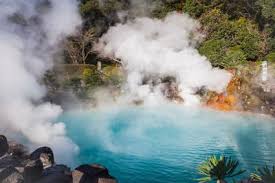
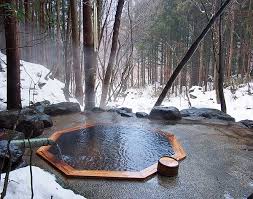
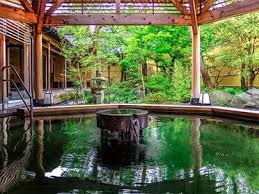
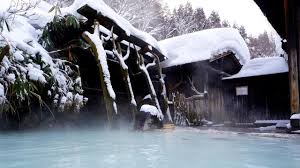
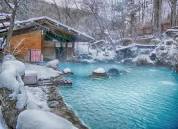
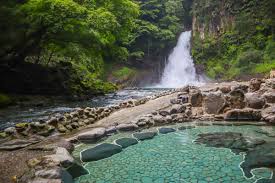
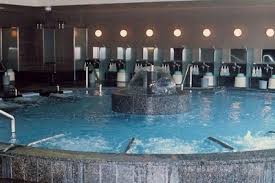

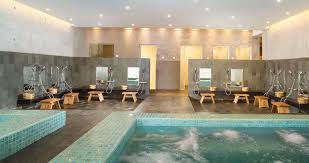
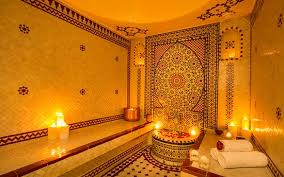
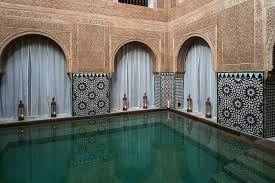
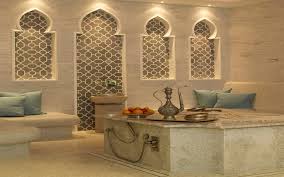
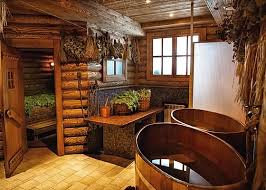
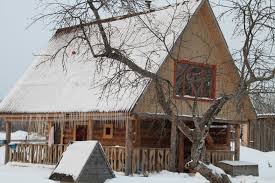
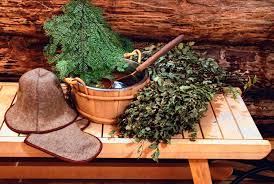
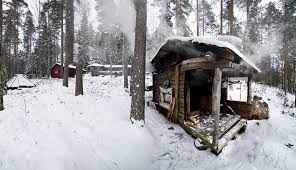
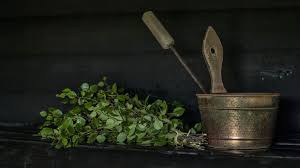
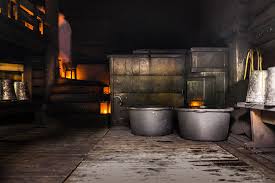
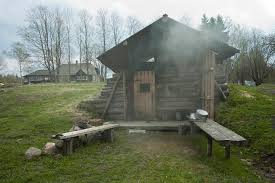
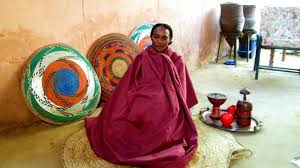
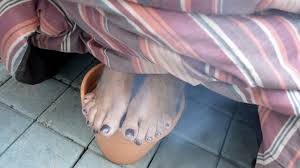
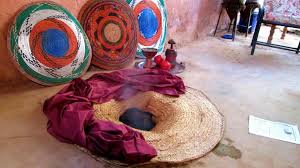
Comments